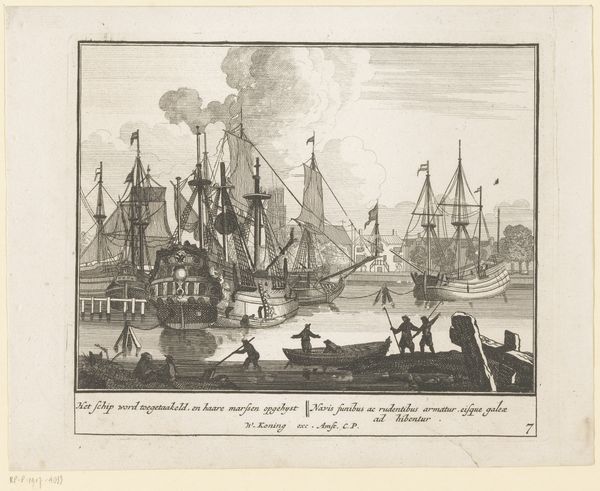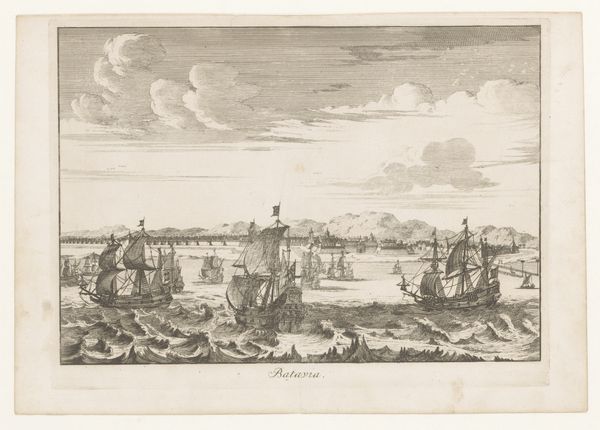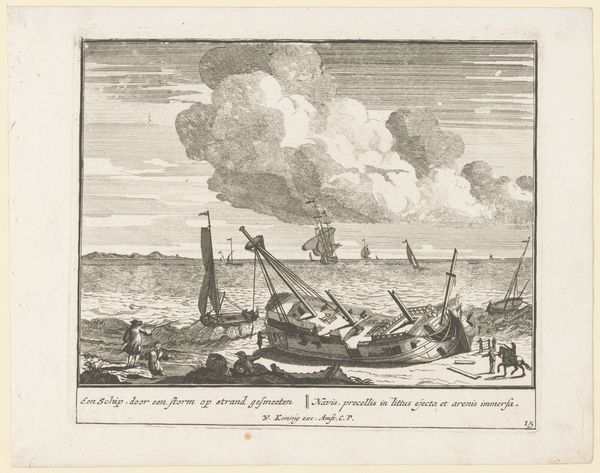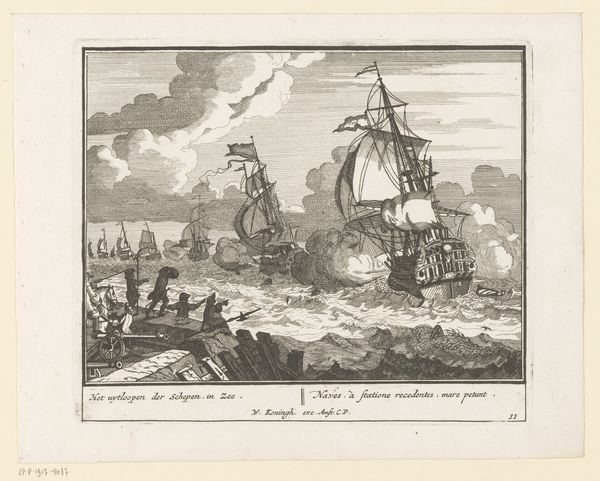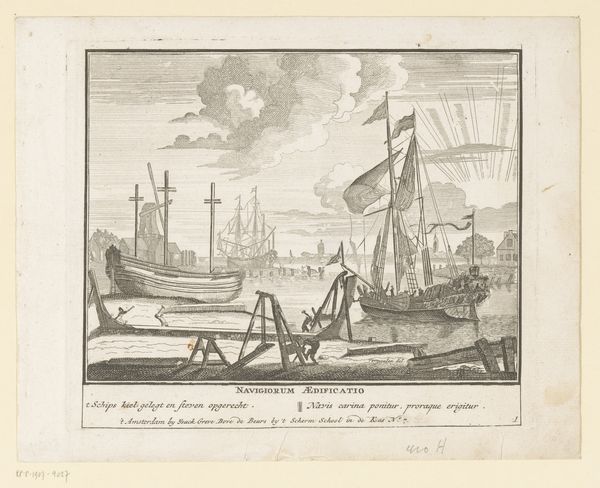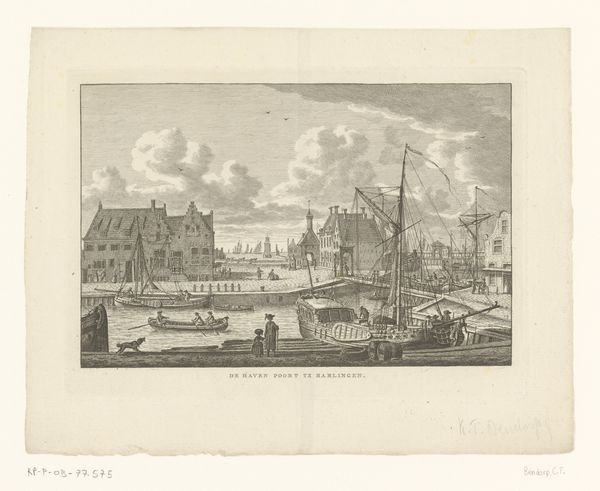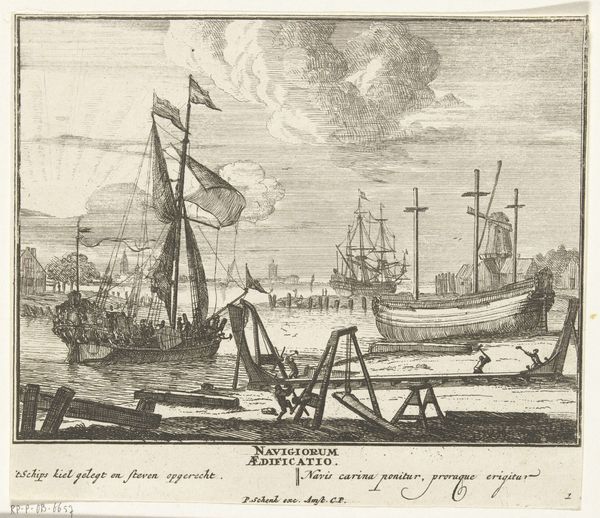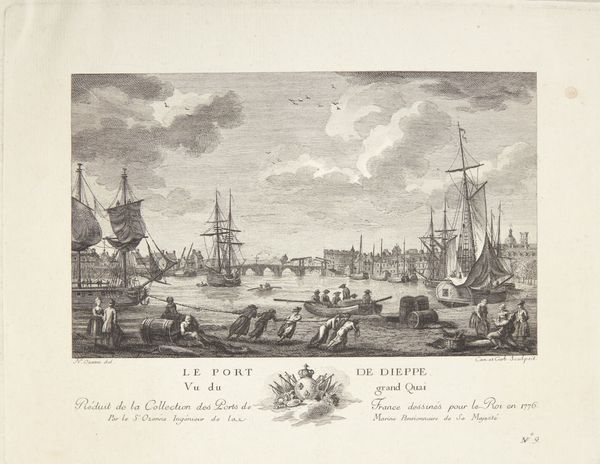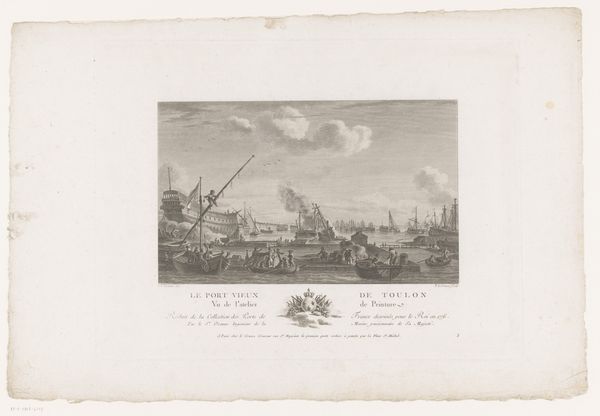
print, engraving
#
dutch-golden-age
# print
#
landscape
#
cityscape
#
engraving
Dimensions: height 164 mm, width 196 mm
Copyright: Rijks Museum: Open Domain
Curator: Looking at this print, currently held at the Rijksmuseum, we see Pieter van den Berge’s "Sloop van een oud schip", created sometime between 1717 and 1732. It presents a scene of a ship being broken down, quite methodically, in what appears to be a bustling Dutch port. Editor: My immediate thought is how fragile everything seems. It's a surprisingly melancholy image, even though it depicts industry. The skeletal remains of the ship dominate the scene, contrasting with the busyness of the surrounding activities. Curator: It's fascinating to consider the cultural context. During the Dutch Golden Age, shipbuilding was a symbol of power and prosperity. This print, however, portrays the lifecycle's end, highlighting the ephemerality of even the grandest achievements. This perspective could be reflective of broader social and economic anxieties of the time. Editor: Absolutely. You see how systematically the ship is being dismantled? It speaks volumes about labor and materiality. Each plank, each beam represents human effort being extracted and repurposed. Even the detritus visible in the foreground - the discarded bits – becomes a testament to the sheer volume of work. Think of the artistry and toil required to create that vessel in the first place, then this final act of methodical deconstruction. Curator: Precisely, the print makes us reflect on the intersection of commerce, decline, and renewal. The workers depicted here are not romanticized; they are shown engaging in the labor necessary for the cycle to continue, underscoring the interconnectedness of creation and demolition within society. Editor: I find myself drawn to the actual engraving itself – the dense network of lines creating a striking level of detail. It's another layer of process. You really feel the weight of those clouds. And consider the skills to render wood and water like this. We're witnessing not just the deconstruction of a ship, but a carefully constructed artwork too. Curator: An insightful observation. The act of depicting this scene transforms a common industrial activity into a moment of contemplation. The artwork is then not just reflecting but also shaping societal perceptions and values about labor and resources. Editor: Yes. It compels us to question how things are made, and what is considered valuable in any period. Even in the dismantling, labor’s imprint lingers. Curator: A somber note perhaps, but pertinent indeed, in understanding the values represented through Van den Berge's composition. Editor: For me, it speaks to our current dialogue surrounding materials and how we might be more considerate when constructing our own systems and societies.
Comments
No comments
Be the first to comment and join the conversation on the ultimate creative platform.
